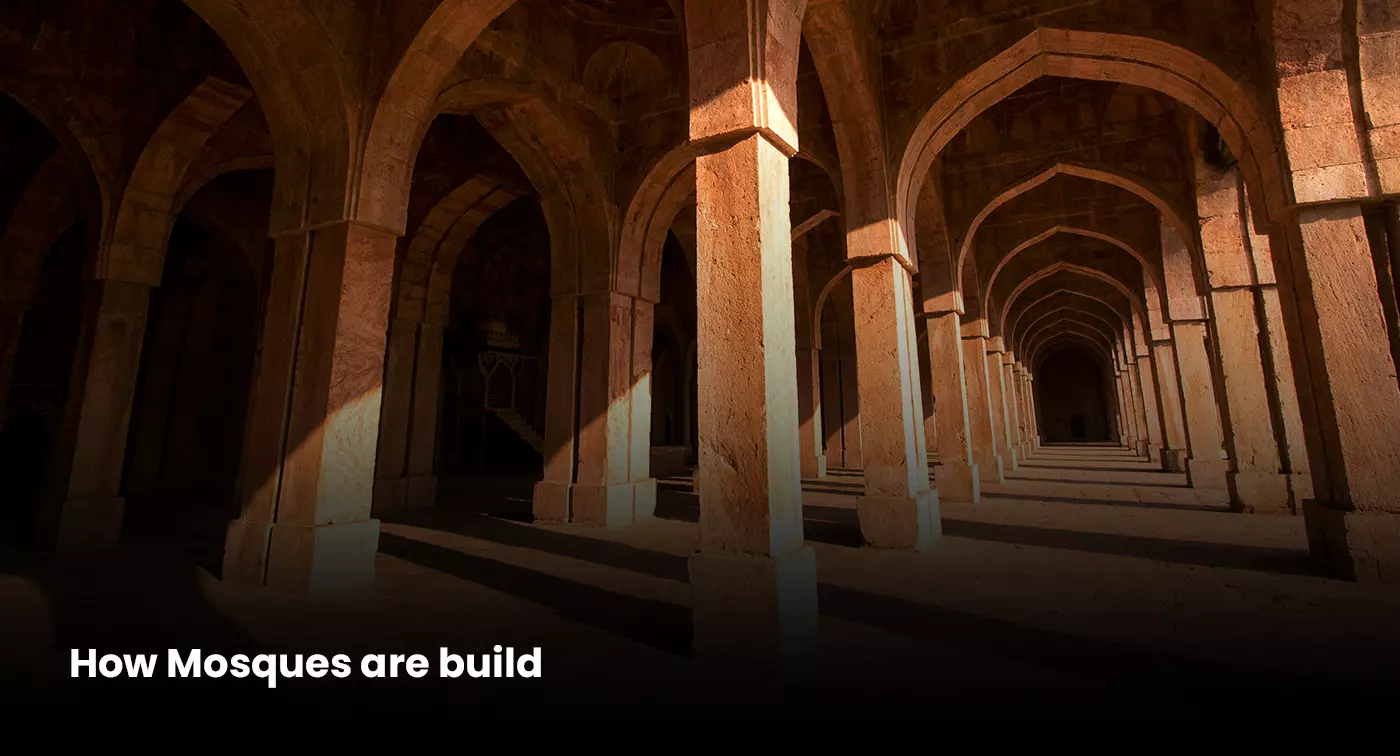How Mosques Are Built: Ancient & Modern Times

Mosques are the center of life for Muslims. They are used for prayers, events during Ramadan (the holiest month in Islam), centers for education and information, and settling disputes. To better understand the Mosque, here are some basic terminologies of the Mosque:
Adhan: The Call to prayer
Qiblah: The wall the indicates the direction of Mecca
Imam: The one who leads the prayers
Muezzin: The person who calls Islamic people to prayer
Digital Structure Of Mosque In The Modern Times
Like every other platform, the time has modernized mosques as well. Now they are digitally structured with an advanced mosque management system and other management facilities for the convenience of the community.
The Mosque management system has done a lot to meet the needs of a mosque and its worshippers. Muslims can run their mosques, from the small prayer room to the large cultural center. With the mosque booking system, they can talk to Muslims and set up meetings online and away from the Mosque.
Each masjid gets its tool, like a donation system for the masjid, to accept donations and talk to Muslims in its city and beyond without using social networks.
With this donation system for the masjid, people can give money right away. They can run multiple campaigns at the same time to get more donations. It provides them with faster and safer transaction options.
What Mosques Have -Architecture & Fundamental Structure Of A Mosque
Even though mosques can look different sizes, their primary purpose is to give Muslims a place to prostrate where they can pray Salat together. Muslim people can pray anywhere, as long as it is clean.
However, praying in a mosque makes Muslims feel like part of a group. Because of this, there are some things that all mosques have in common.
For Salat prayers, the Qibla, which is also called a prayer wall, shows the direction of Mecca and the Kaaba. An imam is a man who is chosen because of how well he knows the Qur’an. Mosques have different designs and styles based on foreign cultures, populations, and local artisans. The architects play the main role in designing unique mosques.
Some factors that are the same in every Mosque.
Mihrab: It is usually a hole in the qibla wall of a mosque that shows the way to Mecca. Mihrab can be very fancy, but it can also be plain so that it doesn’t distract worshippers. The imam stands in the mihrab to lead the prayer. But should also avoid this because there is no textual evidence for it, and it blocks the view of the worshippers who are supposed to follow his actions.
Minbr: The prayer leader, imam, stands on the minbr, which looks like a staircase, when they give a sermon after Friday prayer. It is usually made of wood or stone that has been carved in a very detailed way. The imam prays and preaches from the minbr.
Dome: This is a symbol of the universe and Allah’s power as the one who made everything. This is what it means to believe in Tawhid or the oneness of Allah.
People have called them “the kings of all roofs,” and some of the Muslim’s most important buildings have them. Domes are round structures with no angles or corners. They can cover a huge amount of space without using a single column.
The Prayer Hall: It is right under the dome. The prayer hall seems to be the most important part of the Mosque. It is just an open space without any furniture where prayers are said. But there are a few things to think about when designing this space. Some of these problems come from religious rules about how to pray.
A Mosque’s Minaret: In Islamic architecture, the minaret is the tall tower where a muezzin says the Adhan to call people to prayer. The building is connected to a mosque and has balconies or galleries.
The Ablutions Area: Muslims do their ritual washing, called wudu, before praying. Muslims clean themselves spiritually and ritually before prayer in Wudu or Ablution areas or washrooms. Muslims must be clean and wear good clothes before they go to God and do holy things.
The Oldest Mosques Around The World
Al-Masjid al-Ḥarām: the holiest place in Islam is where the Hajj (the “Pilgrimage”) takes place, where Muslims face when they pray, and where the first Mosque was built.
Al-Masjid al-Aqṣá: which used to be the Qiblah, was built in Palestine.
The Quba Mosque: The first Mosque was built by Muhammad in the 7th century CE. Most of it was rebuilt in the late 20th century. The Quba Mosque lies on the outskirts of Medina, Saudi Arabia. The Mosque was originally located near Quba, 6 km from Medina.
The Mosque of the Companions: The First Mosque in Africa and the globe, founded by Muhammad’s followers in the 7th century.
The Al Nejashi Mosque: The 7th-century Mosque in Negash is the traditional burial location of numerous Mohammad followers who fled to the Aksumite Kingdom. Masjid al-Qiblatayn is one of the world’s earliest mosques. It was built in 7th-century Zeila, soon after the hijrah.
Amr ibn al-As Mosque was built as the center of Egypt’s new capital, Fustat, between 673 and 642 and rebuilt in 1179 and 1875.
Fakhr Ad-Din Mosque: The second oldest Mosque in Somalia is Masjid Fakhr Ad-Din.
The Larabanga Mosque Arabic: This is a mosque in the village of Larabanga, Ghana. It was built in the cone-roofed style in 1421. It is called Sudanese style and is the oldest Mosque in West Africa.
Summary
As the world moves forward and there are so many advancements, Mosques are also advancing in the modern Muslim world through digitalizing. Many things have been introduced in Mosques like Mosque management systems, Kiosks, and handheld devices in recent times. Soon we will be seeing a different world in terms of technological advancements.

